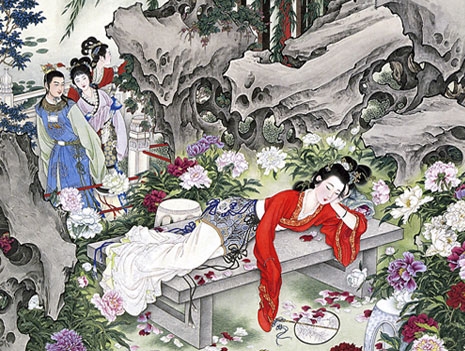
China is a country with an ancient civilization, and the modern Chinese standards of beauty often mimic those from thousands of years ago.
Garment
The ancients had their own attitude towards beauty and fashion. "Beauties Wearing Flowers" is a Chinese painting of the Tang Dynasty (618-907 A.D.). In this painting, women wear their black, glazed hair in a high bun. A strong contrast between colors is also expressed in their costumes: the colors of azure, ochre and carmine are in perfect harmony. In addition, they wear décolletages and their shawls are as thin as a cicada's wings, which let their skin show faintly.
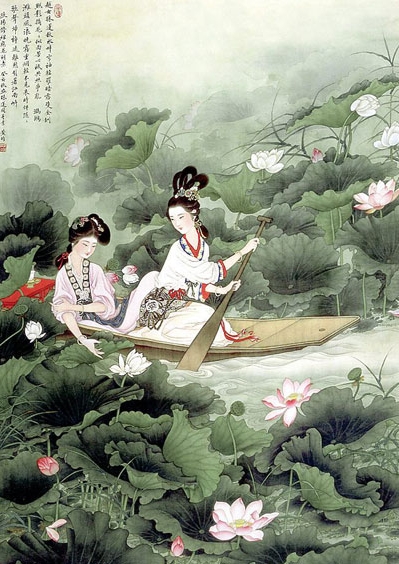
Eyebrow
In the painting, the women's eyebrows are very pointed and eye-catching, which strongly resembles the eyebrow of the queen in the film "Banquet." This typical eyebrow is called the "dot eyebrow," and was exclusive to the Tang Dynasty. Some have mistaken it for an imitation of the ancient costumes of Japan, but it was actually typical of the fashions from the imperial court during the Tang Dynasty.
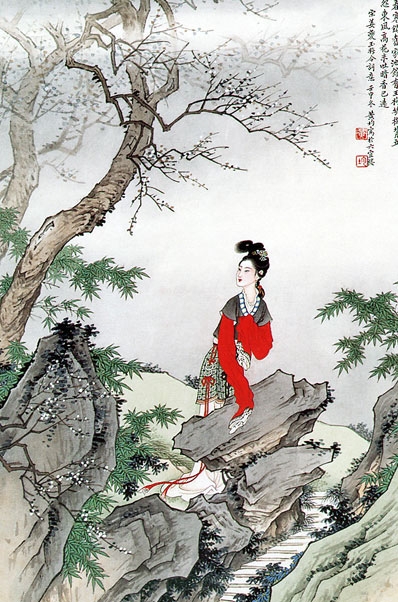
Lip
Lips were considered the sexiest part of oriental women. From the Han Dynasty (206 B.C.-220 A.D.) onwards, the ancients developed an intense interest in using rouge, which was something like lipstick, to ornament their lips into different sharps including circle-shaped, heart-shaped and flower-shaped and so on. Aiming to present a feeling of weakness and tenderness, the ancients of the Tang Dynasty usually used black dyestuff to dye their lips. Cherry-like lips once appeared in many ancient Chinese paintings, and today girls with tiny lips are usually the cover girls of Chinese fashion magazines.
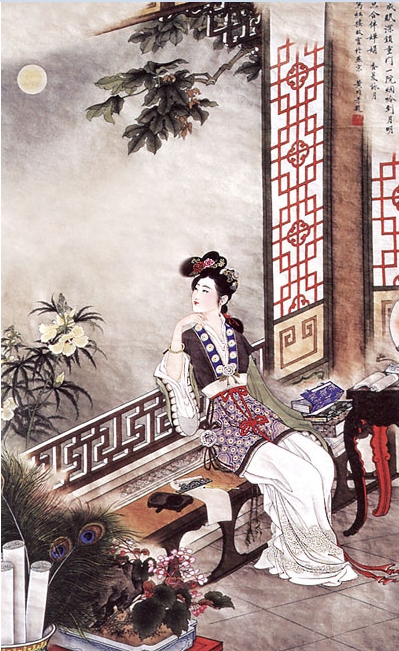
Hairstyle
Besides eyebrows, the ancient beauties stress paid attention to their hair. There are many records about the hairstyle of women. The ancient beauties usually adorned their buns with flowers and hairpins.
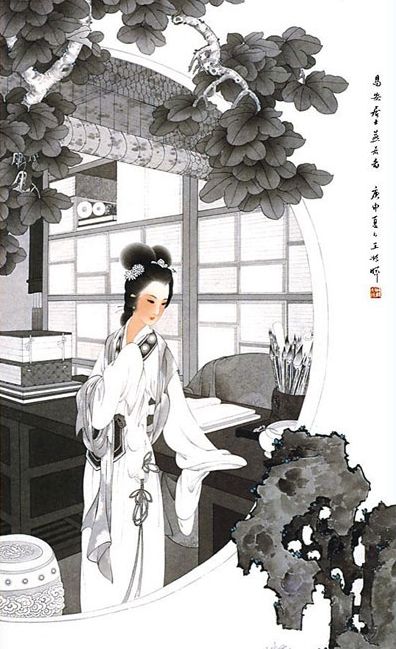
Fragrance
In traditional Chinese life, fragrance was used everywhere. Ancient people used natural spices such as rose flowers to let their daily life and their bodies send forth a fragrant odor of nature. Fragrant bibs (diamond-shaped cloth worn over the chest and abdomen and attached by a loop round the neck and strings fastened behind the back) were a popular thing during that time, which was filled with natural spices inside. When wearing it, the whole body would send forth the fragrance of flowers and plants.
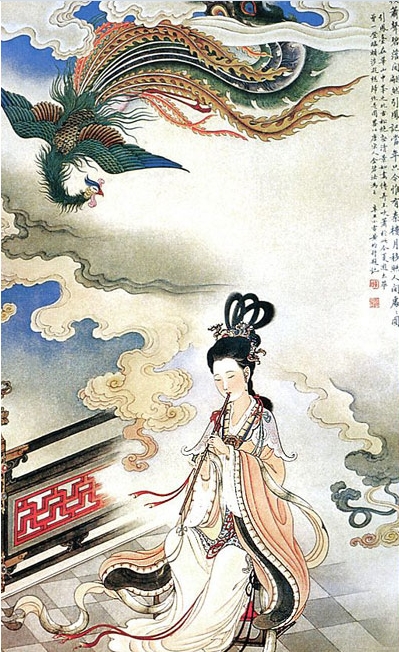
Learning Ancient Face-Painting from the Ancients
This kind of box is used for containing the toilet sets, which were also called "trousseaux." The culture of trousseaux can be traced back to the Neolithic Age (the cultural period beginning around 10,000 B.C.). In 1942, the Qijiaping (a place) of Gansu Province a bronze mirror that had a history of 4,000 years was unearthed, and is considered the earliest toilet set. An ivory comb dating back 5,000 years was also excavated at the ruins of Dawenkou of Shandong Province.
Cosmetic Powder
Chinese women have had a custom of using cosmetic powder for face-painting since the period of the Warring States (475-221 B.C.). The original cosmetic powder was made of rice, and it was used to adorn the face.
The simple steps of making cosmetic powder are like this: First, put the rice into the water, and 10 days later, get it out and mill it into rice slurry, and then let the rice slurry settle for a while. When the water and rice slurry are separated, pour out the water, and when the moisture is totally evaporated, scrape the crude powder on the surface with the bamboo piece. The powder on the bottom is the finished product.
Later, the ancients began to make cosmetic powder with pearls and expensive spices. They not only paid attention to the materials but also put an emphasis on the packaging.
The cosmetic powder of the Southern Song Dynasty (1127-1279), which was unearthed in Fuzhou of Fujian Province, was packed most uniquely. Some had been pressed into specific shapes, such as squares, and some were pressed with the decorative patterns of plum flowers, orchids and water lilies.
There is a standard of Chinese beauty: be beautiful without and intelligent within. That is to say, as a beauty, a woman must be both pretty and bright. A perfect face is not enough; it must be accompanied by a bright brain. Queen Yangguifei (the queen of King Li Longji in Tang Dynasty) was deeply loved by King Li Longji, not only for her beauty, but also for her talent for music and dance.
There were a special group of women engaged in singing and dancing. They received strict artistic training from a young age, so most of them were experts in singing, dancing and literature.
Music, chess, calligraphy and painting were the basic standard of gifted female.
Music
Music refers to the qin (a kind of seven-stringed plucked instrument, similar to a zither) that has a more than 3,000 year history. It was required that every scholar learn the instrument.
Chess
Chess refers to encirclement chess. The ancient women had no chance to do the same work as men. So they gathered and played chess to relax.
Calligraphy and literature
Writing calligraphy and poems was not the privilege of men. Women learned how to read, write and calligraphy no matter what their family background. They read to improve themselves, wrote poems to record their feelings and life, and did calligraphy for enjoyment.
Painting
There were many women who had a talent for painting in ancient times, though their skill was often overlooked in the male-dominated society of that time. The theme of their paintings usually related to flowers, little pets and beautiful women.
Needlework
Needlework is the symbol of diligent women and reflects female emotion and intelligence. It is also the standard of being a good wife.
It is a custom that has lasted to the present time. Women in the old days often made needlework for their lovers, while modern girls like to make gifts such as scarves and cross-stitch embroidery.





